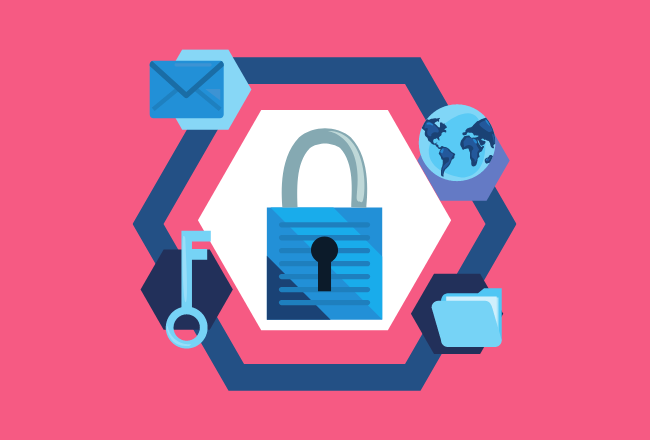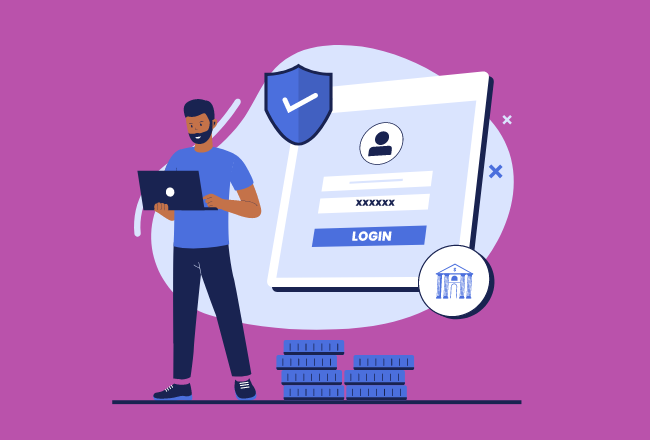
Top Cybersecurity Tips for Credit Unions in 2024
Cybersecurity threats are escalating rapidly. In 2024 and beyond, it’s critical to stay ahead of hackers, ransomware attacks, and data breaches that can cripple operations and erode member trust.
SmartVault recently partnered with CUbroadcast for an informative webinar covering the latest cybersecurity best practices. The webinar featured Luke Kiely, SmartVault’s Chief Information Security Officer (CISO) and former cybercrime officer, who shared his frontline insights into how cybercriminals operate and what credit unions can do to protect themselves.
A summary of the conversation is below. You can watch the full webinar on-demand here.
The Average Data Breach Costs $6 Million
The numbers are staggering: the average data breach costs $6 million. Ransomware attacks on financial institutions command an average $550,000 ransom. Credit unions are a prime target too, being 300 times more likely to be hit than other businesses.
The potential consequences go far beyond just financial losses. Data breaches can severely tarnish years of hard-earned reputation and member trust. Fraudulent transactions, protracted downtime, and having to remediate thousands of member accounts create substantial indirect costs.
“When you’re connected to the internet and use technology, you are vulnerable regardless of who you are,” stated Luke. No credit union is immune from cyber threats.
Evolving Threats Require Comprehensive Strategies
One key point was how rapidly cybersecurity threats are evolving. Simple phishing emails have given way to sophisticated social engineering. Now powered by AI language models, the scams are virtually indistinguishable from legitimate communications.
Defending against these types of human-centered attacks requires a multipronged approach, according to Luke. “You need to integrate people, processes, and technology. Focusing just on the technical aspects will not be enough. You also need to look at your governance structure because cybersecurity risk cannot be mitigated by technology alone.“
Some of his other top cybersecurity recommendations include:
- Developing a comprehensive, risk-based Written Information Security Plan (WISP) to guide your cybersecurity program
- Having a robust Incident Response Plan that covers data breaches, outages, and other continuity risks
- Implementing continuous security education and awareness training for staff and members
The Cloud Advantage for Cybersecurity
Luke emphasized the cybersecurity benefits of transitioning to cloud infrastructure and solutions like a document management system. Cloud providers can implement security controls, redundancy, and compliance measures that go far beyond what an individual credit union could achieve.
“When you look at the features like automated backups, access controls, and ransomware protections offered by cloud platforms, you’ll find the pros heavily outweigh the cons compared to on-premise infrastructure,” stated Luke.
SmartVault leverages Amazon Web Services to deliver bank-grade security for all document sharing and storage. Data is encrypted end-to-end with detailed access controls to ensure sensitive member information is fully protected and only accessible by authorized parties.
The Importance of Vendor Risk Management
Credit unions also need comprehensive vendor risk management because they increasingly rely on a complex web of third-party technology vendors and services.
“You need to look at what data your vendors have access to and what they are allowed to do with that data. Their security posture is just as important as your own,” advised Luke.
SmartVault has adopted a data-centric approach centered around transparency. The company undergoes regular security audits and assessments to ensure it meets the highest standards for safeguarding customer information.
Keep Your Data Protected with SmartVault
The webinar makes it clear: defending against cyber-attacks requires a holistic, proactive cybersecurity strategy – not just piecemeal quick fixes. Developing a coherent security plan, continuously educating personnel and members, leveraging SmartVault’s security and workflow advantages, and closely managing vendor risk are all crucial components.
Want to learn more practical steps your credit union can take to reduce cybersecurity risks?
Watch the full webinar on-demand to get started.




